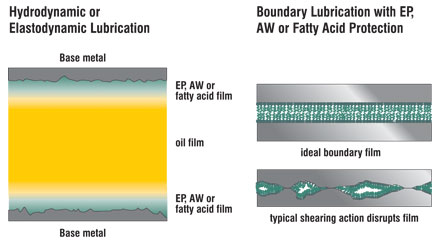-
Call Us
+91 9699881433 -
Mail Us
maxpetro.anil@gmail.com
Gear oil is a lubricant made specifically for transmissions, transfer cases, and differentials in automobiles, trucks, and other machinery. ... Most lubricants for manual gearboxes and differentials contain extreme pressure (EP) additives and antiwear additives to cope with the sliding action of hypoid bevel gears.
The GEAR OIL ZFL 80W 90 is a premium quality extreme pressure multi-grade gear oil blended from highly solvent refined base stocks and fortified with carefully selected extreme pressure additives package to provide unmatched extreme pressure protection, anti-rust, anti-corrosion and anti-oxidation properties.
The GEAR OIL ZFL 80W 90 is a multi-purpose gear lubricant for automotive applications designed to provide optimum benefits in the demanding mechanical transmissions, axles and gear boxes of heavy commercial vehicles, light commercial vehicles and passenger cars.

Gear Oil ZFL 80W 90 is recommended for the new generation vehicles for heavy duty service in their synchromesh manual gearboxes, transaxles, semi-automatic mechanical transmissions, axles etc.
What You Need to Know When Selecting Gear Oils
How do you know which lubricant is the best fit for a given application? Typically, it is as simple as searching through a maintenance manual and selecting a product from the QPL (qualified product list). Unfortunately, this solution may not always provide optimum lubrication for a given gear set, or maximum efficiency in managing lubricant inventory. While some original equipment manufacturers (OEMs) provide generic specifications that consider pertinent parameters, others give only a general specification that may not even consider operating temperatures. It is therefore important for the individuals responsible for selecting lubricants to posses a fundamental understanding of how to specify lubricants for gearing. In addition to understanding and being able to interpret the specifications given by equipment manufacturers, it is important to understand why, and be able to make changes when necessary. When selecting lubricants for industrial gearing, numerous factors must be considered beyond simply selecting a product from the maintenance manual’s QPL, including product availability, operating conditions, the preferred lubricant brand and product consolidation efforts. Proper lubricant selection is a cornerstone of any excellent lubrication program. A good understanding of this allows the lubrication engineer to maximize machinery reliability under normal conditions, as well as use lubricant specification as a problem solver in abnormal conditions.
Choosing an appropriate viscosity grade is usually as simple as finding the recommendation in a component’s maintenance manual. Unfortunately, the manual does not always exist or the machine operates outside the conditions for which the OEM’s recommendations were made. Therefore, it is important to understand the methods for viscosity selection and the factors that affect the requirement. The viscosity for a gear lubricant is primarily chosen to provide a desired film thickness between interacting surfaces at a given speed and load. Because it is difficult to determine the load for most viscosity selection methods, the load is assumed and the determining factor becomes speed. One of the most common methods for determining viscosity is the ANSI (American National Standards Institute) and AGMA (American Gear Manufacturers Association) standard ANSI/AGMA 9005-E02. In this method, assumptions are made concerning the load, viscosity index and the pressure-viscosity coefficient of the lubricant.
After selecting the viscosity grade, the basic type of lubricant must be chosen. While there are many variations, gear lubricants can generally be placed into three categories: R & O, antiscuff and compounded. The gear lubricant type that best fits a given application will be determined by the operating conditions.
Because there are no standard guidelines to help make this determination, the selection is somewhat subjective. Many equipment manufacturers will specify a viscosity requirement and leave this decision to the end user. Others will choose to be conservative and specify EP lubricants for the applications. It is therefore important to understand the general conditions that affect this requirement.

Rust and oxidation inhibited (R&O) gear lubricants do not contain antiscuff additives or lubricity agents. R&O gear oils generally perform well in the categories of chemical stability, demulsibility, corrosion prevention and foam suppression. These products were designed for use in gearing operating under relatively high speeds, low loads, and with uniform loading (no shock loading). These lubricants are the best selection in applications where all surface contacts operate under hydrodynamic or elastohydrodynamic lubrication conditions. They do not perform well or prevent wear under boundary lubrication conditions.